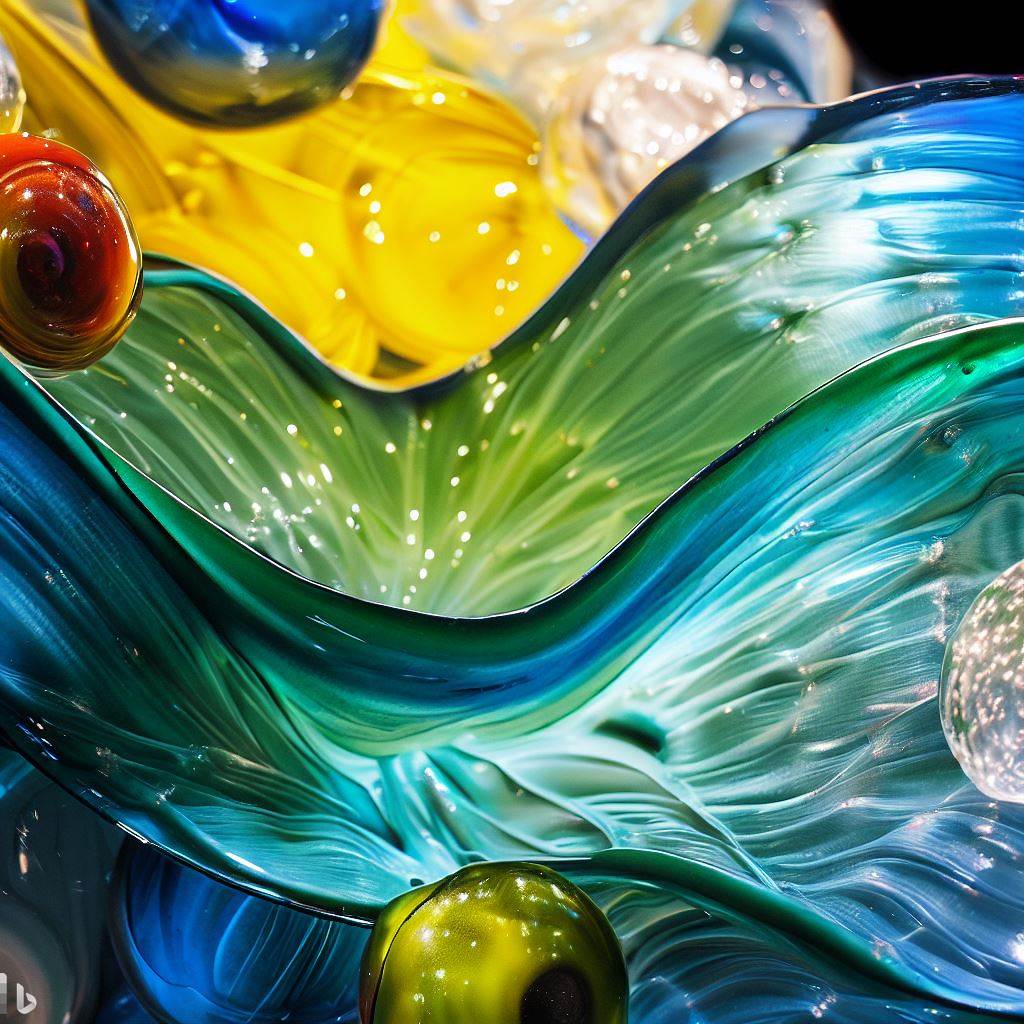Sculpting with Molten Glass: Forging Dimensional Artworks
Glassblowing allows artists to sculpt stunning three-dimensional artworks by precisely manipulating viscous glowing glass. Advanced techniques shape the hot medium into remarkably intricate and expressive forms rivaling traditional cast metal or chiseled stone sculpture. Exploring how master glass artists leverage blowing methods, gravity, and innovative tools opens up the tremendous potential for sculpting imaginative works within this unlikely molten material.
Blowing Basic Shapes
The fundamentals of glassblowing center on using centrifugal force, gravity, and air pressure to inflate heated glass into various vessel shapes. Spinning elongates straight sides and necks. Controlled blowing inflates spherical and conical forms. Allowing gravity to stretch glass downward shapes rounded bases.
Mastering these basics allows more daring 3D structures. Elongating narrow sections too quickly risks collapse, so balance remains key. Once fundamental physics are intuitive, more expressive contours come within reach through skillful handling of the dynamic medium.
Sculpting Solid Forms
Sculpting requires strategic cooling and heating to build up mass. Alternating between forceful expansion while molten and rapid cooling of areas using metal blocks shapes solid, thick forms. Repeating inflation then cooling in sections gradually constructs volumetric shapes difficult to achieve otherwise.
Thicker protruding sections get deeply heated before attaching separately blown components. Gravity’s impacts get incorporated to integrate organic sagging effects into the overall form. Managing heat strategically allows glassblowers to sculpt robust solid masses.
Shaping Figurative Work
Many glass artists apply their technical skills towards figurative work to create human and animal forms. Strategies like using large paddes to mold details along with extensive planning of how forms will evolve enable remarkably lifelike results.
Portrait sculptures capture individual facial expressions through careful blown nuances. Equine or aquatic subjects showcase glass capturing realistic muscle structure and movement. Abstracted figures evoke emotion through simple distorted features. The human breath at the heart of glassblowing seems to imbue figurative works with heightened vitality.
Pushing Scale Boundaries
Monumental glass sculpture makes a dramatic impact, so glassblowers continue pushing size boundaries. Large-scale commissions require intense collaboration to achieve installation heights over 20 feet tall. Entire teams work in relay with specialized equipment like extended blowpipes and enormous annealing ovens.
Gravity and structural stresses pose immense challenges for massive works. Reinforced steel armatures anchor some towering sculptures. Modular construction assembles smaller sections into grand spectacles. Investing sculptures with such grandeur demonstrates glassblowing’s creative breadth.
Fusing Mixed Media Elements
Many glass artists combine blown components with mixed media in inventive ways. Kinetic glass integrates bellows, motors, and lights to create animated sculptures. Glass panels embed photography or are sandwiched with wood and metal layers, merged through fusing. Some conceptual works feature glass shaped around everyday objects or found materials, contextualizing glass in unexpected ways.
Approaching glass as only one medium among many opens revolutionary directions. Complementary textures, colors, and functions from nontraditional pairings inspire glassblowers to think beyond traditional vessels. This experimental ethos propels the craft in visionary new directions.
Pushing Creative Boundaries
Contemporary artists approach glass sculpting as a radical form of self-expression. Their monumental frozen splash pieces and conceptual fused works challenge assumptions about glass traditions. They leverage the medium’s attributes like transparency, surface texture, and responsiveness to light to create emotionally evocative sculptures imparting imaginative perspectives for viewers to unpack and interpret.
While respecting generations of refined technique, today’s glass sculptors fuse venerable methods with cutting-edge originality to manifest creative ingenuity. No longer just a decorative craft, glassblowing becomes a fertile playground for boundless three-dimensional experimentation.
Appreciating Glass Sculpture
Seeing glass sculpture in-person allows fully appreciating the technical mastery and artistry at work. Many museums like the Chrysler Museum of Art and Corning Museum of Glass curate exceptional glass sculpture collections and exhibits. Public hot shops provide glimpses behind the scenes.
But even online images convey glass’s astounding versatility as a sculptural form. Let inspiration flow from seeing what possibilities imaginative artists unleash from this radiant medium. Molten glass awaits any creative vision bold enough to bring it fully into its third dimension.
